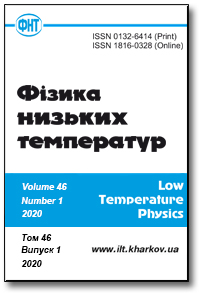Development of a technology for manufacturing a heat-shielding structure on nitrogen cryocontainers, excluding heat transfer through gas
DOI (Low Temperature Physics):
https://doi.org/10.1063/10.0013291Ключові слова:
cryocontainer, thermal insulation, liquid nitrogen, vacuumАнотація
One of the important stages in the creation of the scientific and technical foundations for the calculation, design and manufacturing technology of the lowest heat-conductivity thermal protection from screen-vacuum thermal insulation (SVTI) is the development of a process for achieving the optimal vacuum Р0 ≤ 10–3 Pa in the SVTI layers, since at this pressure, thermal conductivity (λeff) through the SVTI is carried out only due to the radiant (λrad) and contact-conductive (λk.k) components. It is proposed to obtain such a pressure in thermal insulation by using cushioning material in it, which was previously degassed in a separate vacuum chamber at 370–380 K for 12 h in order to remove water molecules from its structure and then replace them with nitrogen molecules. These molecules have 3–4 times less heat of adsorption; therefore they are pumped out faster. As a result, it becomes possible to accelerate (by ~ 20 h) to achieve optimal vacuum in thermal insulation, as well as 11% lower effective thermal conductivity [equal to (14.1–14.3)∙10–5 W/(m∙K)]. The analysis carried out (according to the developed methodology) showed that the achieved optimal effective thermal conductivity of thermal insulation in a cryocontainers is determined by 33% of radiant thermal conductivity [4.7∙10–5 W/(m∙K)] and 67% of the contactconductive component [9.4∙10–5 W/(m∙K)].
